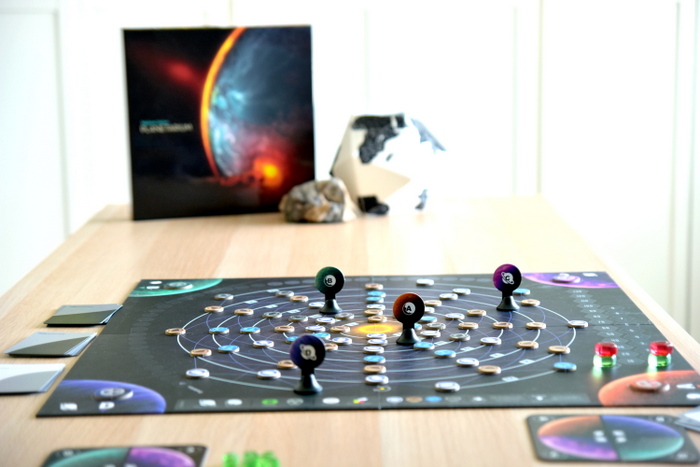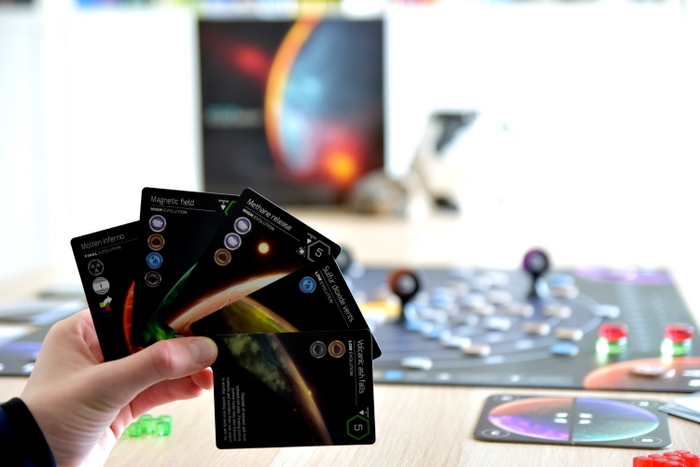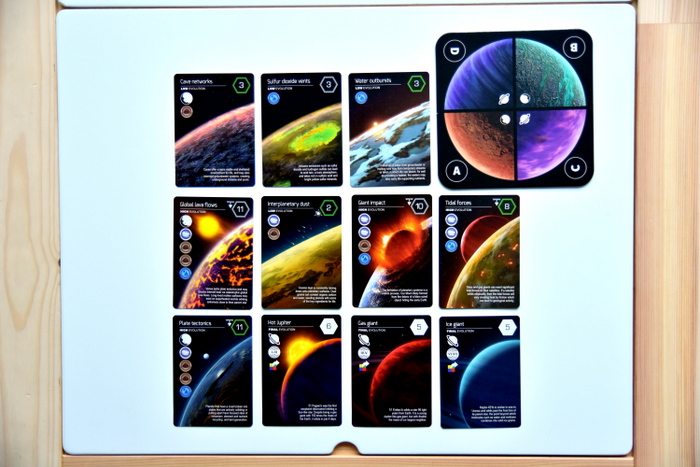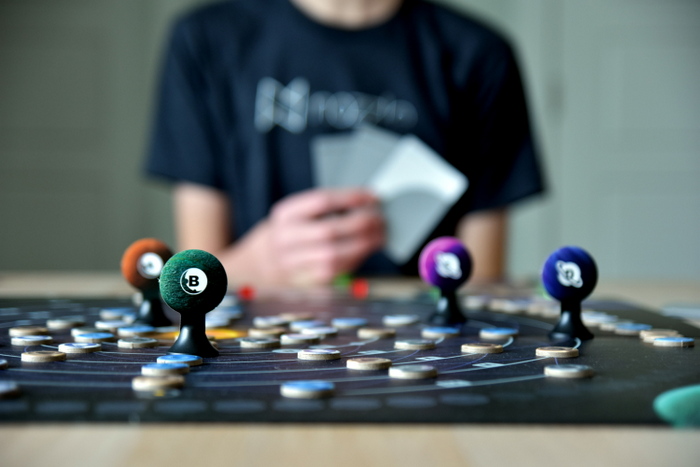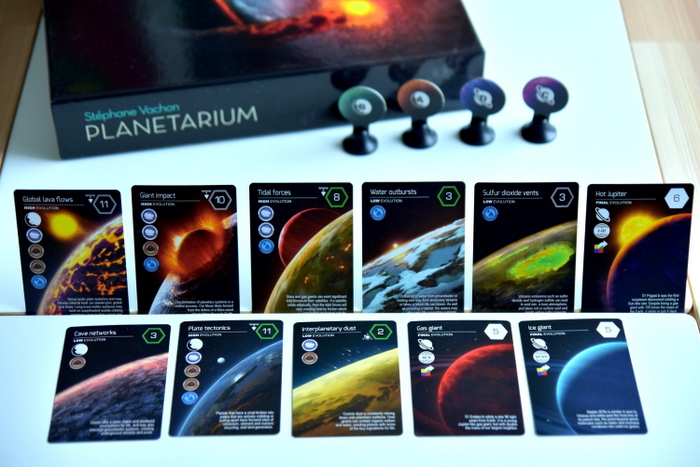Have you ever wanted to create your own planet? Manipulate matter?? Gather and move elements with gravity???
Planetarium is a interstellar battle between players to best guide the formation of a new planetary system. Players earn points throughout the game for creating/evolving planets, but must be focused on the end game, the final state of the solar system. During the game, players must strategize and manipulate the positions of the planets to create the most advantageous evolvement leading to the final turn of the game.

To set up the game, place the Planet tokens on the matching spaces on the board. Mix up the matter tokens and place them face up on all the white dots on the board.
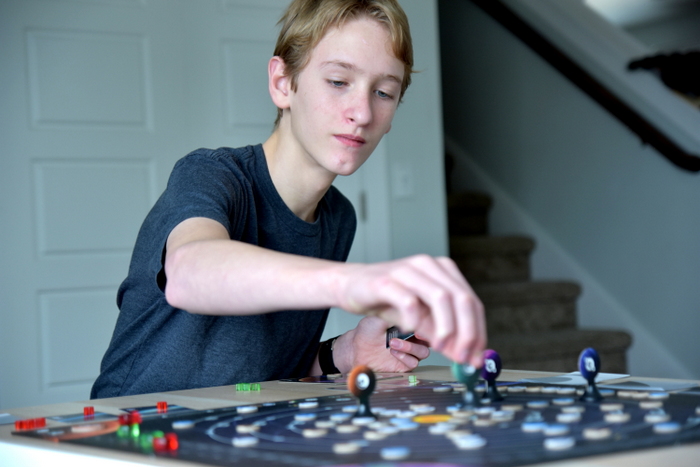
TURN ACTION #1: MOVE/COLLECT MATTER TOKENS
Matter is collected when it collides with a Planet. Both Planet and Matter tokens must move clockwise around the star and can’t jump over other matter tokens. Matter can’t land on the same space as other matter tokens, but if a Planet runs into a matter token, that player collects the matter token and the Planet takes its space on the board.
Both Matter and Planets can move along the thick circular orbit line OR the thinner lines that connect them.
When Matter tokens are scored, they are placed on your player mat in the section that corresponds with the Planet it collided with.
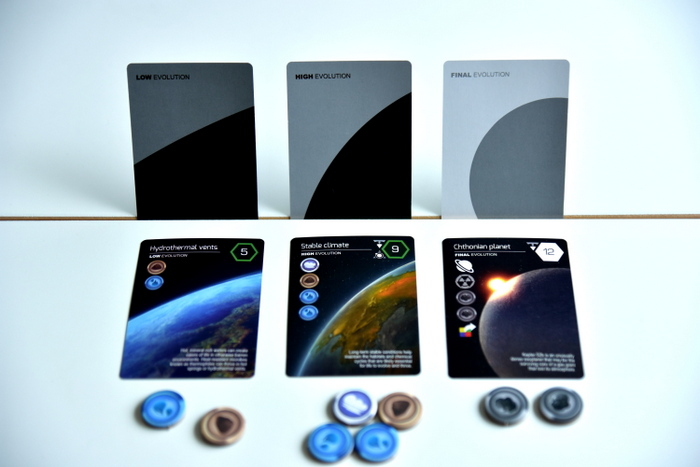
TURN ACTION #2: PLAY CARDS
Players have 5 cards in their hand at all times: 2 Low Evolution, 2 High Evolution, and 1 Final Evolution (by drawing 2, discarding 1, and keeping 1 Final Evolution card).
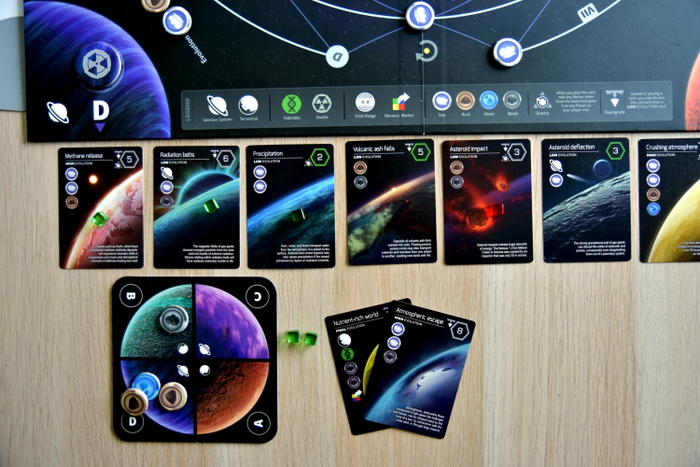
The goal of the game is to evolve each planet by playing Evolution cards. To play a card, pay the matter requirements listed vertically along the left side of the card. The planet space on the player’s board that the matter tokens came from indicates which planet the card is evolving.
The cards played in the photo above are evolving planet D – the matter tokens that paid for the cards came from the Planet D space on the player’s board.
Cards contain lots of information – point values, matter requirements, gravity, downgrading, hostility and more. Each card also contains a little blurb of information about various outer space topics. We love this added educational element and are sure to read and share those bits of info to learn more about the Great Beyond as we play!
If you played a card on your turn, draw one new card. Choose a high or low evolution card or draw two final evolution cards, and choose one to keep and one to discard.
Players continue moving and collecting matter and playing cards until the spaces along the Evolution Track (the spaces where used/spent matter tokens go) are completely filled in with matter tokens.
The player that placed the final matter token on the Evolution Track can now play Final Evolution cards, all of which have specific requirements that you have to be preparing for throughout the entire game. Players can only place Final Evolution cards on planets where they have placed other evolution cards.
The player who most strategically evolved planets throughout the beginning phase of the game and set himself up for completion of Final Evolution cards on the last turn will be the player with the most points. That player wins the game!
Planetarium is one of the most strategically complex science games we have discovered through gameschooling. The analytical thinking, reasoning, and spacial manipulation required by players is intense and an excellent way to build critical thinking and problem solving skills. The scientific theme and information on the cards creates an excellent stand-alone science lesson that your kids will teach themselves!
Thanks so much to Starling Games for this stellar science strategy game!

